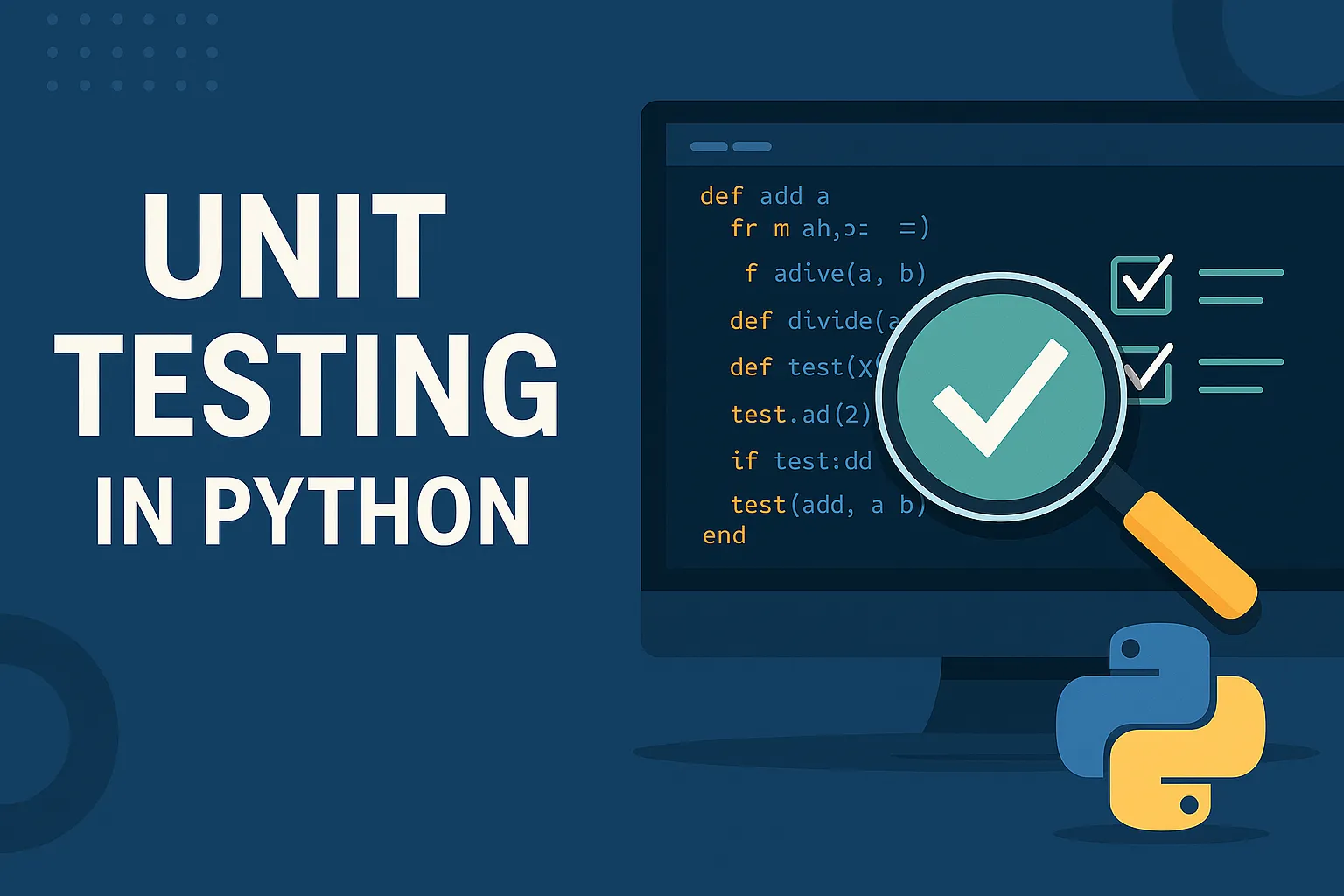
Unit testing is an essential practice in software development, ensuring that individual components of a program work as expected. In Python, unit tests help catch bugs early, improve code reliability, and make maintenance easier. Whether you’re building a small personal project or a large production system, good unit tests act as a safety net — letting you refactor, experiment, and expand your code with confidence.
In this guide, we’ll explore how to implement unit testing in Python using the built-in unittest framework, and look at some practical examples that you can adapt to your own projects.
What is Unit Testing?
Unit testing involves testing individual functions or methods in isolation. The goal is to verify that each “unit” of the code performs correctly under different conditions. By focusing on one piece of logic at a time, developers can find issues earlier in the process, long before those issues become tangled within the larger codebase. This isolation is what makes unit testing so powerful — you can identify exactly where something breaks and fix it without fear of side effects.
Why is Unit Testing Important?
Unit testing provides several benefits that make your codebase stronger, safer, and easier to manage over time. It helps identify bugs early in development, improves maintainability, and makes collaboration smoother for teams working on shared codebases. When everyone writes tests, it becomes easier to understand the expected behavior of different modules, and updates can be made with far less risk.
- Early Bug Detection: Identifies issues before deployment.
- Code Maintainability: Makes refactoring easier without breaking functionality.
- Better Collaboration: Helps teams understand expected behaviors.
Setting Up Unit Testing in Python
Python’s built-in unittest module provides a simple way to write and execute tests without installing anything extra. It’s modeled after Java’s JUnit framework and comes ready to use, making it the perfect starting point for beginners.
Step 1: Create a Function to Test
Let's define a function in a file called math_operations.py:
def add(a, b):
return a + b
def divide(a, b):
if b == 0:
raise ValueError("Cannot divide by zero")
return a / b
Step 2: Write Unit Tests
Create a separate file named test_math_operations.py and write tests using unittest:
import unittest
from math_operations import add, divide
class TestMathOperations(unittest.TestCase):
def test_add(self):
self.assertEqual(add(2, 3), 5)
self.assertEqual(add(-1, 1), 0)
def test_divide(self):
self.assertEqual(divide(10, 2), 5)
with self.assertRaises(ValueError):
divide(5, 0)
if __name__ == "__main__":
unittest.main()
Step 3: Run the Tests
Once you’ve written your tests, you can execute them using the command line:
python -m unittest test_math_operations.py
This command runs all the tests inside your file and reports whether they passed or failed. Seeing green “OK” messages after a test run is a sign your logic works as expected — and over time, these quick feedback loops make your development process much more reliable.
Understanding Assertions in Unit Testing
Assertions are the heart of your tests. They compare expected results with actual results and raise errors if something doesn’t match. Each assertion describes exactly what you’re checking, helping you pinpoint why a test fails.
assertEqual(a, b): Checks ifa == bassertNotEqual(a, b): Checks ifa != bassertTrue(x): Checks ifxisTrueassertFalse(x): Checks ifxisFalseassertRaises(ErrorType, func, *args): Checks if an error is raised
Using setUp and tearDown Methods
In larger test suites, you may find yourself repeating setup code across multiple tests. Python’s unittest provides setUp() and tearDown() methods to handle preparation and cleanup around each test automatically.
class TestExample(unittest.TestCase):
def setUp(self):
self.value = 10
def test_multiplication(self):
self.assertEqual(self.value * 2, 20)
def tearDown(self):
self.value = None
This makes tests cleaner and ensures each one starts from a predictable, isolated state — which is crucial for avoiding flaky or misleading test results.
Advanced Unit Testing with pytest
While unittest is powerful, many developers prefer pytest for its simplicity and concise syntax. pytest eliminates the need for boilerplate code and integrates seamlessly with fixtures, parameterization, and advanced plugins like pytest-cov for coverage reports.
pip install pytest
Create a test file and use straightforward assertions:
def test_add():
assert add(2, 3) == 5
Run your tests with:
pytest test_math_operations.py
pytest will automatically discover test files, execute them, and provide readable output. It’s ideal for scaling your testing strategy as your project grows.
Best Practices for Unit Testing
Effective tests go beyond syntax — they should be meaningful, targeted, and easy to maintain. Write tests for every core function in your project, include edge cases, and keep them fast so you can run them frequently. When possible, integrate your tests into CI/CD pipelines to automate checks and catch regressions before they reach production.
- Write Tests for Every Function: Ensure all key logic is covered.
- Use Meaningful Test Cases: Include edge cases and boundary values.
- Automate Testing: Run tests as part of CI/CD pipelines.
FAQs
What’s the difference between unit testing and integration testing?
Unit testing checks the smallest pieces of your application, while integration testing focuses on how multiple modules work together as a whole.
Can I mock APIs or databases in my tests?
Yes. Python’s unittest.mock module allows you to simulate external dependencies like APIs, file systems, or databases, keeping your unit tests fast and isolated.
Which is better, unittest or pytest?
Both are excellent choices. unittest is built-in and reliable, while pytest is more flexible, with powerful features for larger projects.
How often should I run my tests?
Ideally, every time you make changes — whether locally during development or automatically through a CI/CD pipeline.
Do small scripts need unit tests?
Yes, even small automation scripts benefit from a few tests. They help you avoid regressions and keep the script reliable as you evolve it.
Conclusion
Unit testing is one of the simplest but most transformative habits you can develop as a Python programmer. It builds discipline, boosts confidence, and saves countless hours of debugging. Whether you stick with unittest or move to pytest, consistent testing will make your code cleaner, safer, and easier to evolve over time. Start small, build gradually, and you’ll soon find your tests becoming an indispensable part of your workflow.



